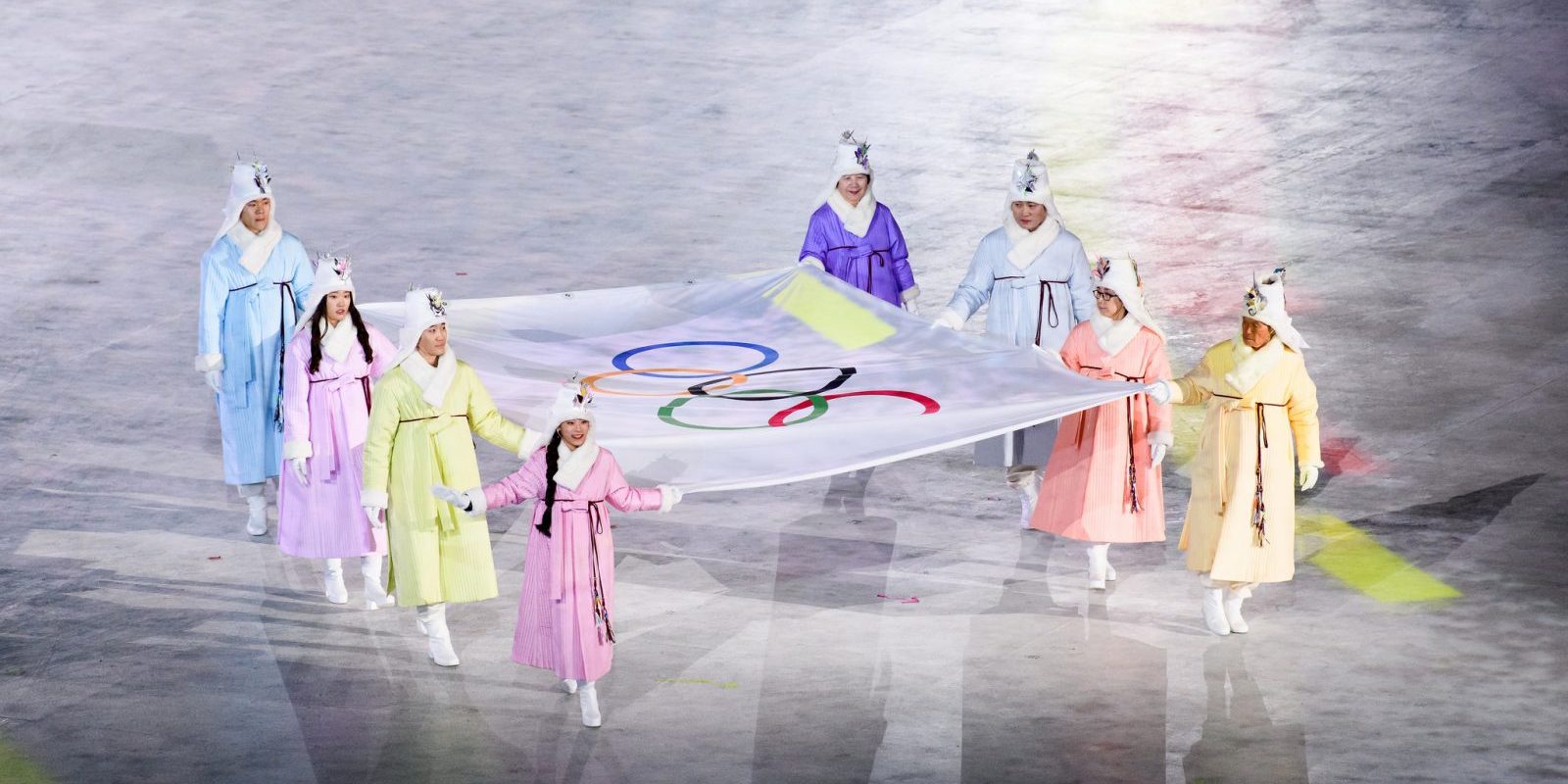The 2018 PyeongChang Olympics, which ran from February 9th-25th, was not only a host to 92 teams in various sporting events, but also served as a cultural exhibition over the course of the 16 day period- one of the most prominent being the opening ceremony that officially kicked off the winter games. The opening ceremony to any Olympics has served for decades as a platform to showcase the host country’s culture and history as well as awe and entertain audiences. The PyeongChang Olympics were no different. Already playing host to the 1988 Summer Olympics in Seoul, the PyeongChang Winter Olympics aimed to create a performance which elaborated on Korean culture while mixing the traditional with the new in a cutting-edge technological display.
The main characters of the Olympic opening ceremony, five children, opened with the exploration of Korea’s past. The five were a representation of the five Olympic rings, dressed in corresponding colored winter coats, but were also a representation of the Five Elements or Ohaeng in Asian philosophy- water, wood, fire, earth, and metal. In an introduction video which served as a set-up for the ceremony’s themes and performances, we follow the children as they happen upon a cave and unlock historical articles from Korea’s over 5000 year long history. Some of these national treasures include the turtle ship or Geobukseon and the star-gazing tower or Cheomseongdae. Then, as one of the main cultural aspects to the opening ceremony, a Baekho or white tiger leaps from a painted mural to life before making its grand entrance in the Olympic stadium with the five children at its side. Three other animals appear afterwards as well- the blue dragon or Chungryeong, the vermilion bird or Joojak, and the black turtle or Hyunmoo.
All four of these animals hold a particular significance in the ancient Korean ideology, Sashin which can be literally translated to “four gods”. With this, these four gods assume the four directions- where the blue dragon represents east, the white tiger represents west, the vermilion bird represents south, and the black turtle represents north. While exactly when the figures and idea of Sashin first originated is not clear, they certainly played a major part in Korean history. As guardians of the four directions, they were even applied militarily in troop’s flags, ensigns, or colors as well as lineups. Places and objects bearing these directional meanings such as in tombs, building structures, and coins were also commonplace. In the case of ancient burial tombs, murals depicting the four gods can be still seen even today.
Another figure from Korean legend to make an appearance in the stadium was the Inmyeonjo which is an animal with a man’s face and a bird’s body. The Inmyeonjo can be found throughout Korean mythology and is typically depicted with good fortune in Taoism and Buddhism as in Taoism the bird symbolizes longevity.
Perhaps most eye-catching was the coordinated dance performance done in traditional hanbok. The traditional dancers dawned white and violet, holding the Korean percussion instrument the janggu. The janggu is a double-side drum which can be played sitting down or strapped to the front for movement. In the middle of the stadium sat janggu players, beating out the rhythm for the dancers before unveiling red and blue garb that had been veiled under their white clothing. The resulting formation was the image of the Taegukki or more commonly the national flag for South Korea in which the balancing colors are meant to represent the balance between yin and yang.
Not only was Korea’s cultural aspects on display for the ceremony, but also its cutting-edge technology as it utilized 1,218 drones to form images such as the Olympic flag in the night sky. The programmed coordination took much preparation but the result became something unprecedented as it was the most drones ever used in a single display.
Of course, the keystone of the opening ceremony was the lighting of the Olympic torch in which South Korean skating gold-medalist and national favorite Kim Yeon-ah did the honors. With what is dubbed a successful kickoff to the games, both national and foreign press expressed favorable reactions to the ceremony. The American newspaper Daily Beast expressed “the opening ceremony is usually very silly but the PyeongChang Olympics opening ceremony showcased many dazzling visual spectacles and technological feats” while the BBC coined it as “closely detailed and refined.” With each Olympic Games doubling as a cultural showcase, the opening ceremony seemed to succeed in accomplishing this goal- and this is not even including the many cultural exhibitions held throughout the Olympics throughout the following 16 days. However, it seemed to have served as a grand preamble for the days to come.
Written by: Lacey Bonner
Originally from the Washington DC metropolitan area, 3rd year student and Candidate for a Bachelor of Arts in Political Science and a Candidate for Bachelor of Arts in the Korean Language at the University of Hawaii at Mānoa, current exchange student for a 1-year period at Korea University and intern at VANK (Voluntary Agency Network of Korea)
